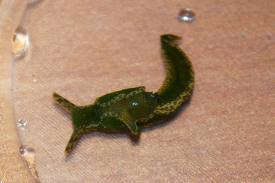2) They do not have internal gill or ctenidium an
osphradium
osphradium
3) Mantle and mantle cavity is absent in them
4) They respire by secondary branchiae which are usually
arranged in circlet around the anus.Examples:-Doris, Tritonia, Armina, Eolis.
 |
| Armina |
 Eolis |
 |
| Eolis |
Order10:-RHODOPACEA
1) They are vermiform snail.
2) They are without external appendages.
3) They have nephridia of protonephridial type.
Example:-Rhodope.
Order11:PYRAMIDELLACEA
1) They have spirally twisted shell
2) They have long invaginable proboscis.
3) They do not have operculum.
4) They do not have gills and radula.
Examples:-Turbonilla, Odostomia
Order12:- PARASITA
1) They are endoparasitic gastropods found in the interior  |
| Rhodope. |
Order11:PYRAMIDELLACEA
1) They have spirally twisted shell
2) They have long invaginable proboscis.
3) They do not have operculum.
4) They do not have gills and radula.
Examples:-Turbonilla, Odostomia
 |
| Turbonilla, |
 |
| Odostomia |
Order12:- PARASITA
of holothurians.
2) They are extremely degenerated snails.
Examples:-Entoconcha, Thyonicola
Examples:-Entoconcha, Thyonicola
 |
| Entoconcha Thyonicola |
Note: -To read about bacteria go to thallophytes.blogspot.com































